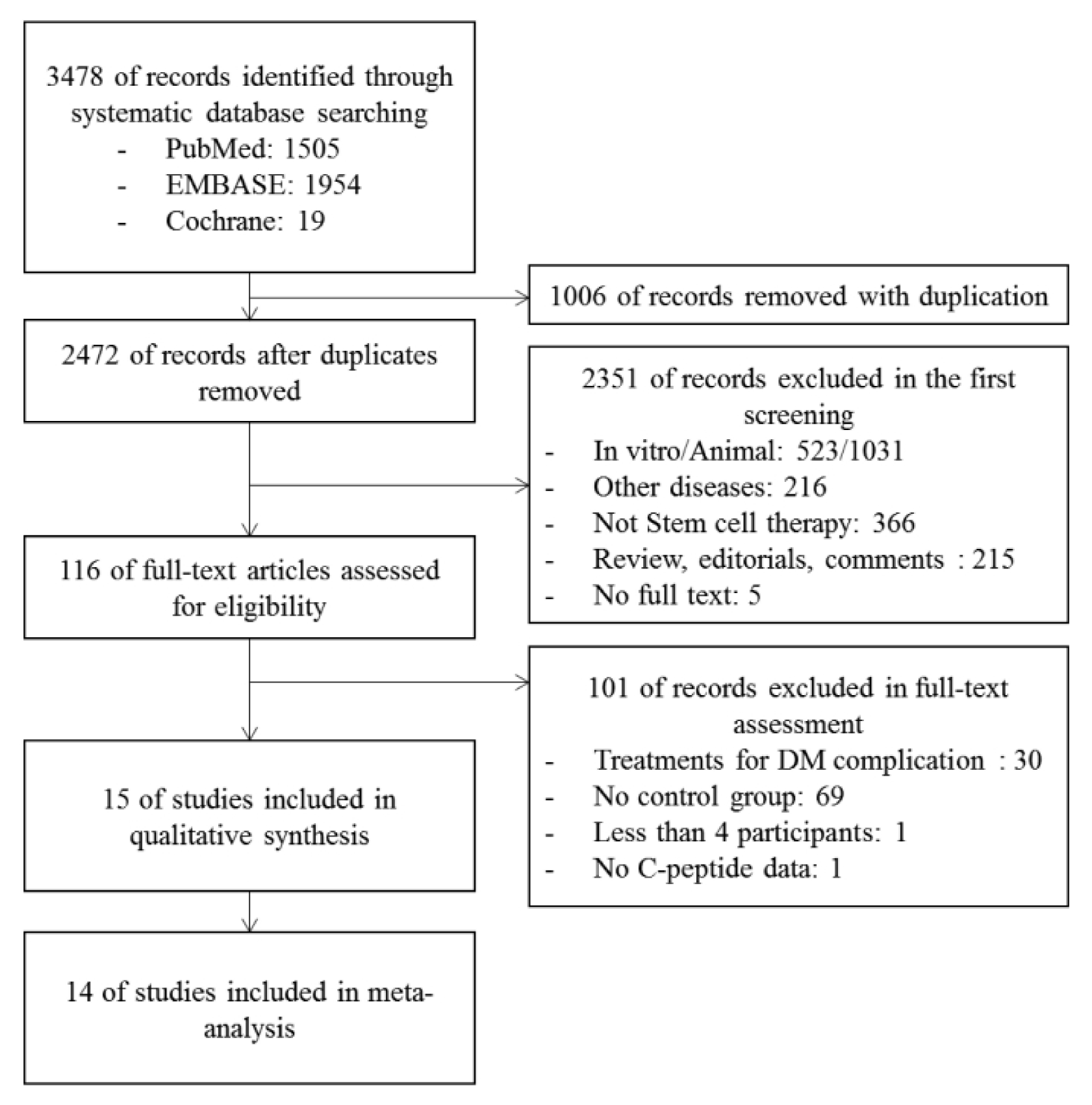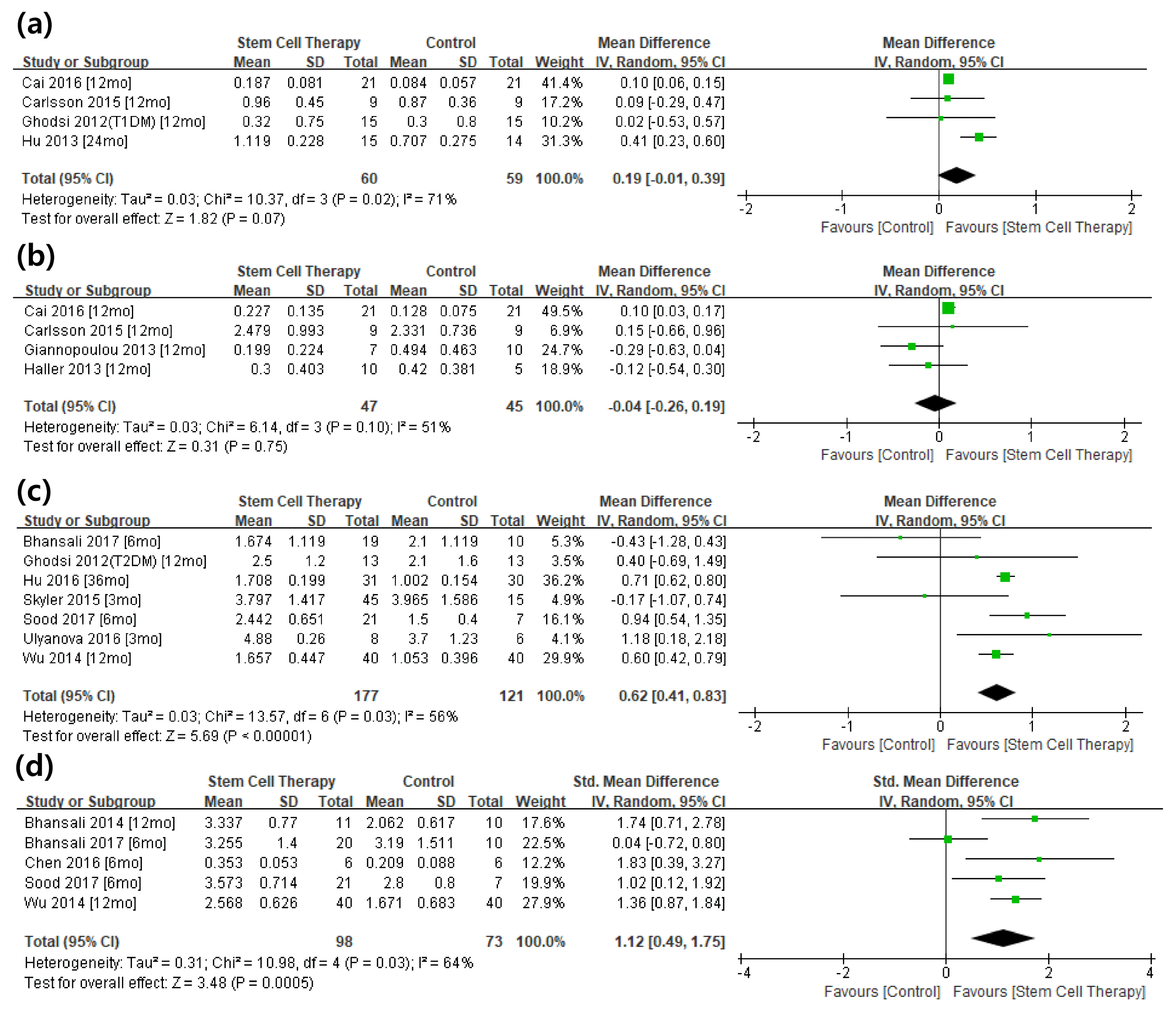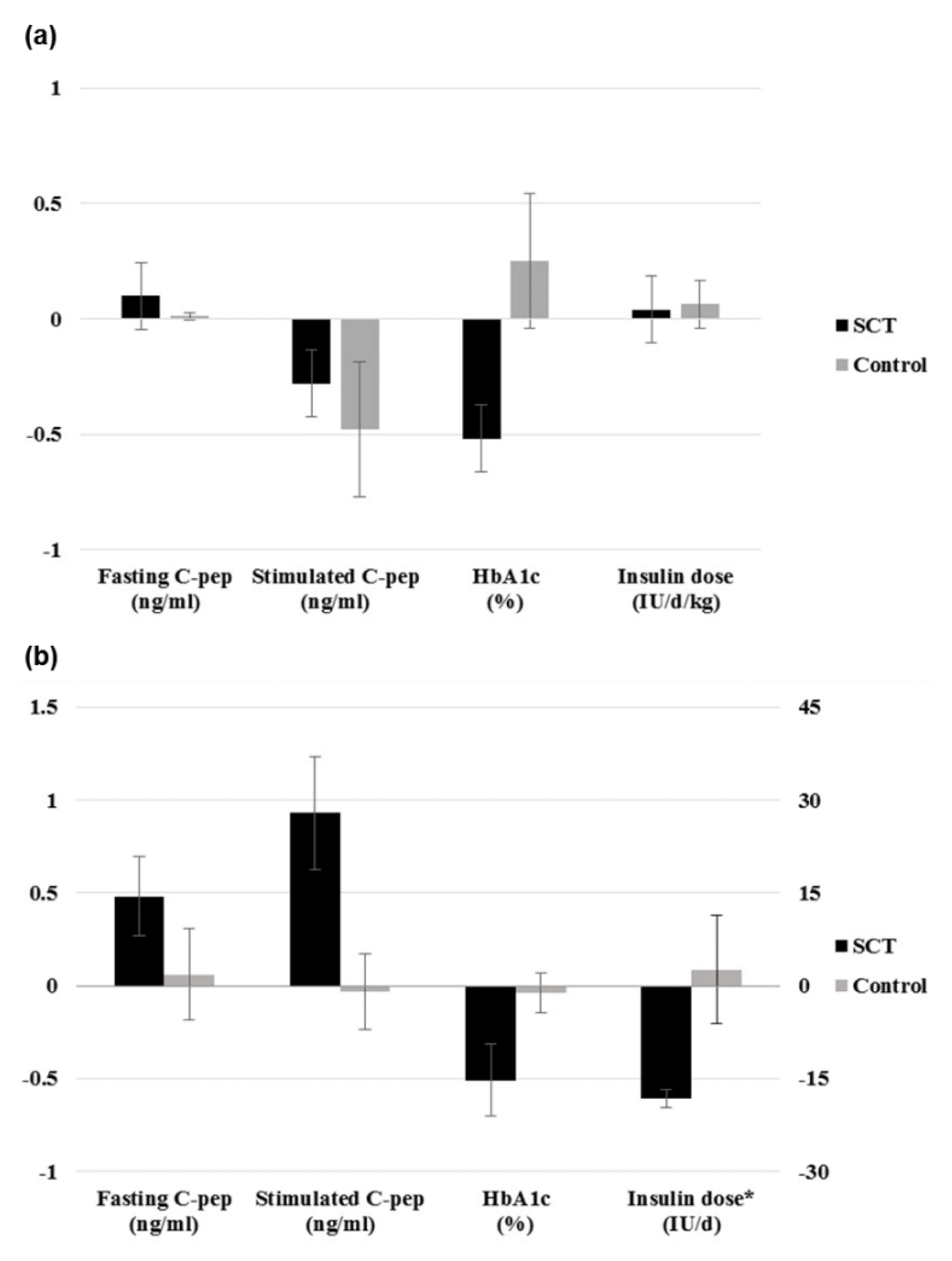1. Effect of intensive therapy on residual beta-cell function in patients with type 1 diabetes in the diabetes control and complications trial. A randomized, controlled trial. The Diabetes Control and Complications Trial Research Group. Ann Intern Med. 1998; 128:517–523. DOI:
10.7326/0003-4819-128-7-199804010-00001. PMID:
9518395.
2. Kahn SE. Clinical review 135: the importance of beta-cell failure in the development and progression of type 2 diabetes. J Clin Endocrinol Metab. 2001; 86:4047–4058. PMID:
11549624.

3. U.K. prospective diabetes study 16. Overview of 6 years’ therapy of type II diabetes: a progressive disease. U.K. Prospective Diabetes Study Group. Diabetes. 1995; 44:1249–1258. DOI:
10.2337/diab.44.11.1249.
4. Levy J, Atkinson AB, Bell PM, McCance DR, Hadden DR. Beta-cell deterioration determines the onset and rate of progression of secondary dietary failure in type 2 diabetes mellitus: the 10-year follow-up of the Belfast Diet Study. Diabet Med. 1998; 15:290–296. DOI:
10.1002/(SICI)1096-9136(199804)15:4<290::AID-DIA570>3.0.CO;2-M. PMID:
9585393.

5. Bagust A, Beale S. Deteriorating beta-cell function in type 2 diabetes: a long-term model. QJM. 2003; 96:281–288. DOI:
10.1093/qjmed/hcg040. PMID:
12651972.

6. Voltarelli JC, Couri CE, Stracieri AB, Oliveira MC, Moraes DA, Pieroni F, Coutinho M, Malmegrim KC, Foss-Freitas MC, Simões BP, Foss MC, Squiers E, Burt RK. Autologous nonmyeloablative hematopoietic stem cell transplantation in newly diagnosed type 1 diabetes mellitus. JAMA. 2007; 297:1568–1576. DOI:
10.1001/jama.297.14.1568. PMID:
17426276.

7. Couri CE, de Oliveira MC, Simões BP. Risks, benefits, and therapeutic potential of hematopoietic stem cell transplantation for autoimmune diabetes. Curr Diab Rep. 2012; 12:604–611. DOI:
10.1007/s11892-012-0309-0. PMID:
22864730.

8. Snarski E, Milczarczyk A, Torosian T, Paluszewska M, Urbanowska E, Król M, Boguradzki P, Jedynasty K, Franek E, Wiktor-Jedrzejczak W. Independence of exogenous insulin following immunoablation and stem cell reconstitution in newly diagnosed diabetes type I. Bone Marrow Transplant. 2011; 46:562–566. DOI:
10.1038/bmt.2010.147. PMID:
20581881.

9. Estrada EJ, Valacchi F, Nicora E, Brieva S, Esteve C, Echevarria L, Froud T, Bernetti K, Cayetano SM, Velazquez O, Alejandro R, Ricordi C. Combined treatment of intra-pancreatic autologous bone marrow stem cells and hyperbaric oxygen in type 2 diabetes mellitus. Cell Transplant. 2008; 17:1295–1304. DOI:
10.3727/096368908787648119.

10. Bhansali S, Dutta P, Kumar V, Yadav MK, Jain A, Mudaliar S, Bhansali S, Sharma RR, Jha V, Marwaha N, Khandelwal N, Srinivasan A, Sachdeva N, Hawkins M, Bhansali A. Efficacy of autologous bone marrow-derived mesenchymal stem cell and mononuclear cell transplantation in type 2 diabetes mellitus: a randomized, placebo-controlled comparative study. Stem Cells Dev. 2017; 26:471–481. DOI:
10.1089/scd.2016.0275. PMID:
28006991.

11. Ghodsi M, Heshmat R, Amoli M, Keshtkar AA, Arjmand B, Aghayan H, Hosseini P, Sharifi AM, Larijani B. The effect of fetal liver-derived cell suspension allotransplantation on patients with diabetes: first year of follow-up. Acta Med Iran. 2012; 50:541–546. PMID:
23109026.
12. Cernea S, Raz I, Herold KC, Hirshberg B, Roep BO, Schatz DA, Fleming GA, Pozzilli P, Little R, Schloot NC, Leslie RD, Skyler JS, Palmer JP. D-Cure Workshop. Challenges in developing endpoints for type 1 diabetes intervention studies. Diabetes Metab Res Rev. 2009; 25:694–704. DOI:
10.1002/dmrr.1002. PMID:
19771545.

13. Greenbaum CJ, Harrison LC. Immunology of Diabetes Society. Guidelines for intervention trials in subjects with newly diagnosed type 1 diabetes. Diabetes. 2003; 52:1059–1065. DOI:
10.2337/diabetes.52.5.1059. PMID:
12716733.

14. Palmer JP, Fleming GA, Greenbaum CJ, Herold KC, Jansa LD, Kolb H, Lachin JM, Polonsky KS, Pozzilli P, Skyler JS, Steffes MW. C-peptide is the appropriate outcome measure for type 1 diabetes clinical trials to preserve beta-cell function: report of an ADA workshop, 21–22 October 2001. Diabetes. 2004; 53:250–264. DOI:
10.2337/diabetes.53.1.250. PMID:
14693724.

15. Wang ZX, Cao JX, Li D, Zhang XY, Liu JL, Li JL, Wang M, Liu Y, Xu BL, Wang HB. Clinical efficacy of autologous stem cell transplantation for the treatment of patients with type 2 diabetes mellitus: a meta-analysis. Cytotherapy. 2015; 17:956–968. DOI:
10.1016/j.jcyt.2015.02.014. PMID:
25824289.

17. Cao JX, Zhao YQ, Ding GC, Li JL, Liu YS, Wang M, Xu BL, Liu JL, Wang ZX. Evaluation of the clinical efficacy of stem cell transplantation in patients with type 1 diabetes mellitus. Int J Clin Exp Med. 2016; 9:19034–19051.
18. Ulyanova O, Taubaldieva Z, Tuganbekova S, Saparbayev S, Kim N, Trimova R, Kozina L, Shaimardanova G. Leptin level in patients with type 2 diabetes mellitus after fetal pancreatic stem cell transplant. Exp Clin Transplant. 2016; 14(Suppl 3):45–47. PMID:
27805510.
19. Chen P, Huang Q, Xu XJ, Shao ZL, Huang LH, Yang XZ, Guo W, Li CM, Chen C. The effect of liraglutide in combination with human umbilical cord mesenchymal stem cells treatment on glucose metabolism and β cell function in type 2 diabetes mellitus. Chin J Int Med. 2016; 55:349–354. Chinese. DOI:
10.3760/cma.j.issn.0578-1426.2016.05.004. PMID:
27143183.
20. Wu Z, Cai J, Chen J, Huang L, Wu W, Luo F, Wu C, Liao L, Tan J. Autologous bone marrow mononuclear cell infusion and hyperbaric oxygen therapy in type 2 diabetes mellitus: an open-label, randomized controlled clinical trial. Cytotherapy. 2014; 16:258–265. DOI:
10.1016/j.jcyt.2013.10.004. PMID:
24290656.

21. Sood V, Bhansali A, Mittal BR, Singh B, Marwaha N, Jain A, Khandelwal N. Autologous bone marrow derived stem cell therapy in patients with type 2 diabetes mellitus - defining adequate administration methods. World J Diabetes. 2017; 8:381–389. DOI:
10.4239/wjd.v8.i7.381. PMID:
28751962. PMCID:
5507836.

22. Skyler JS, Fonseca VA, Segal KR, Rosenstock J. MSB-DM003 Investigators. Allogeneic mesenchymal precursor cells in type 2 diabetes: a randomized, placebo-controlled, dose-escalation safety and tolerability pilot study. Diabetes Care. 2015; 38:1742–1749. DOI:
10.2337/dc14-2830. PMID:
26153271. PMCID:
4542273.

23. Hu J, Yu X, Wang Z, Wang F, Wang L, Gao H, Chen Y, Zhao W, Jia Z, Yan S, Wang Y. Long term effects of the implantation of Wharton’s jelly-derived mesenchymal stem cells from the umbilical cord for newly-onset type 1 diabetes mellitus. Endocr J. 2013; 60:347–357. DOI:
10.1507/endocrj.EJ12-0343. PMID:
23154532.

24. Hu J, Wang Y, Gong H, Yu C, Guo C, Wang F, Yan S, Xu H. Long term effect and safety of Wharton’s jelly-derived mesenchymal stem cells on type 2 diabetes. Exp Ther Med. 2016; 12:1857–1866. DOI:
10.3892/etm.2016.3544. PMID:
27588104. PMCID:
4997981.

25. Haller MJ, Wasserfall CH, Hulme MA, Cintron M, Brusko TM, McGrail KM, Wingard JR, Theriaque DW, Shuster JJ, Ferguson RJ, Kozuch M, Clare-Salzler M, Atkinson MA, Schatz DA. Autologous umbilical cord blood infusion followed by oral docosahexaenoic acid and vitamin D supplementation for C-peptide preservation in children with Type 1 diabetes. Biol Blood Marrow Transplant. 2013; 19:1126–1129. DOI:
10.1016/j.bbmt.2013.04.011. PMID:
23611977. PMCID:
3852705.

26. Carlsson PO, Schwarcz E, Korsgren O, Le Blanc K. Preserved β-cell function in type 1 diabetes by mesenchymal stromal cells. Diabetes. 2015; 64:587–592. DOI:
10.2337/db14-0656. PMID:
25204974.

27. Cai J, Wu Z, Xu X, Liao L, Chen J, Huang L, Wu W, Luo F, Wu C, Pugliese A, Pileggi A, Ricordi C, Tan J. Umbilical cord mesenchymal stromal cell with autologous bone marrow cell transplantation in established type 1 diabetes: a pilot randomized controlled open-label clinical study to assess safety and impact on insulin secretion. diabetes care. 2016; 39:149–157. DOI:
10.2337/dc15-0171. PMID:
26628416.

28. Bhansali A, Asokumar P, Walia R, Bhansali S, Gupta V, Jain A, Sachdeva N, Sharma RR, Marwaha N, Khandelwal N. Efficacy and safety of autologous bone marrow-derived stem cell transplantation in patients with type 2 diabetes mellitus: a randomized placebo-controlled study. Cell Transplant. 2014; 23:1075–1085. DOI:
10.3727/096368913X665576. PMID:
23561959.

29. Giannopoulou EZ, Puff R, Beyerlein A, von Luettichau I, Boerschmann H, Schatz D, Atkinson M, Haller MJ, Egger D, Burdach S, Ziegler AG. Effect of a single autologous cord blood infusion on beta-cell and immune function in children with new onset type 1 diabetes: a non-randomized, controlled trial. Pediatr Diabetes. 2014; 15:100–109. DOI:
10.1111/pedi.12072. PMID:
24102806.

30. Hu J, Li C, Wang L, Zhang X, Zhang M, Gao H, Yu X, Wang F, Zhao W, Yan S, Wang Y. Long term effects of the implantation of autologous bone marrow mononuclear cells for type 2 diabetes mellitus. Endocr J. 2012; 59:1031–1039. DOI:
10.1507/endocrj.EJ12-0092. PMID:
22814142.

31. Hill NR, Levy JC, Matthews DR. Expansion of the homeostasis model assessment of β-cell function and insulin resistance to enable clinical trial outcome modeling through the interactive adjustment of physiology and treatment effects: iHOMA2. Diabetes Care. 2013; 36:2324–2330. DOI:
10.2337/dc12-0607. PMID:
23564921. PMCID:
3714535.

33. Jones AG, Hattersley AT. The clinical utility of C-peptide measurement in the care of patients with diabetes. Diabet Med. 2013; 30:803–817. DOI:
10.1111/dme.12159. PMID:
23413806. PMCID:
3748788.

35. Huss R, Xiangwei X, Heimberg H. Adult stem cells regenerate the endocrine pankreas and normalize hyperglycaemia and insulin production in diabetic mice. Verh Dtsch Ges Pathol. 2005; 89:184–190. German. PMID:
18035689.
36. Zhao Y, Jiang Z, Zhao T, Ye M, Hu C, Yin Z, Li H, Zhang Y, Diao Y, Li Y, Chen Y, Sun X, Fisk MB, Skidgel R, Holterman M, Prabhakar B, Mazzone T. Reversal of type 1 diabetes via islet β cell regeneration following immune modulation by cord blood-derived multipotent stem cells. BMC Med. 2012; 10:3. DOI:
10.1186/1741-7015-10-3. PMID:
22233865. PMCID:
PMC3322343.

37. Zhao Y, Jiang Z, Zhao T, Ye M, Hu C, Zhou H, Yin Z, Chen Y, Zhang Y, Wang S, Shen J, Thaker H, Jain S, Li Y, Diao Y, Chen Y, Sun X, Fisk MB, Li H. Targeting insulin resistance in type 2 diabetes via immune modulation of cord blood-derived multipotent stem cells (CB-SCs) in stem cell educator therapy: phase I/II clinical trial. BMC Med. 2013; 11:160. DOI:
10.1186/1741-7015-11-160. PMID:
23837842. PMCID:
3716981.

38. Cantú-Rodríguez OG, Lavalle-Gonzalez F, Herrera-Rojas MA, Gutiérrez-Aguirre CH, Mancías-Guerra C, Jaime-Pérez JC, Gonzalez-Llano O, Zapata-Garrido A, Villarreal-Perez JZ, Gomez-Almaguer D. Autologus hematopoietic stem cell transplant in type 1 diabetes mellitus in a nonmyeloablative and outpatient setting. Blood. 2014; 124:1191.





 PDF
PDF Citation
Citation Print
Print





 XML Download
XML Download